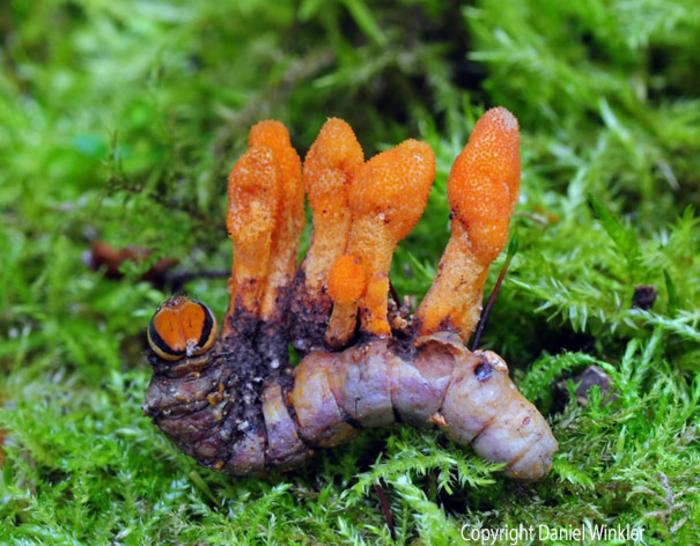Summary: Scientists at the University of Nottingham have uncovered how a compound from a parasitic caterpillar fungus interferes with cancer cell growth. Their research reveals that cordycepin, derived from an orange-colored fungus, works by disrupting growth signals in cells – potentially offering a less damaging alternative to current cancer treatments.
Journal: FEBS Letters, November 7, 2024, DOI: 10.1002/1873-3468.15046
Reading time: 5 minutes
From Traditional Medicine to Modern Laboratory
Deep in the traditions of Asian medicine lies an unusual remedy: a fungus that grows on caterpillars. Now, this peculiar natural phenomenon is providing new insights into potential cancer treatments. The orange-colored fungus, known as Cordyceps militaris, produces a compound that has caught the attention of modern medical researchers.
Breaking Down the Discovery
Scientists at the University of Nottingham’s School of Pharmacy have made significant progress in understanding how this fungal compound, called cordycepin, affects cancer cells. Their findings, published in FEBS Letters, reveal an important mechanism that could lead to new drug developments.
“We have been researching the effects of cordycepin on a range of diseases for a number of years and with each step we get closer to understanding how it could be used as an effective treatment,” explains Dr. Cornelia de Moor from the School of Pharmacy.
The Science Behind the Treatment
The research team used advanced techniques to examine how cordycepin affects thousands of genes across multiple cell lines. Their investigation revealed that inside cells, cordycepin transforms into a molecule called cordycepin triphosphate, which mimics ATP – the cell’s energy carrier. This transformed version appears to be the key to its cancer-fighting potential.
What makes this discovery particularly promising is how it targets cancer cells. The compound interrupts cell growth signals that typically run wild in cancer, potentially offering a more targeted approach than many current treatments.
Looking to the Future
As Dr. de Moor notes, “Our data confirms that cordycepin is a good starting point for novel cancer medicines and explains its beneficial effects. For instance, derivatives of cordycepin could aim to produce the triphosphate form of the drug to have the same effect.”
The research also provides practical tools for future clinical applications. The team identified specific genes that consistently respond to cordycepin treatment, which could help monitor the effectiveness of treatments in patients.
Glossary
- Cordycepin: A compound produced by the Cordyceps militaris fungus that shows potential anti-cancer properties
- ATP: The primary energy carrier in cells (adenosine triphosphate)
- Cordycepin triphosphate: The active form of cordycepin after it’s processed by cells
- Growth factor signaling: Cellular communication processes that control cell growth and division
Reader Comprehension Quiz
- What organism produces cordycepin?
Answer: Cordyceps militaris, an orange fungus that infects caterpillars - What form does cordycepin take inside cells?
Answer: Cordycepin triphosphate - What cellular process does cordycepin interrupt?
Answer: Cell growth signals - Why might this treatment be advantageous over current options?
Answer: It could be less damaging to healthy tissues than current treatments
Enjoy this story? Get our newsletter! Subscribe here
If our reporting has informed or inspired you, please consider making a donation. Every contribution, no matter the size, empowers us to continue delivering accurate, engaging, and trustworthy science and medical news. Independent journalism requires time, effort, and resources—your support ensures we can keep uncovering the stories that matter most to you.
Join us in making knowledge accessible and impactful. Thank you for standing with us!

